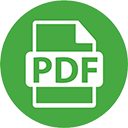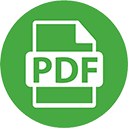09 Building a Healthy City
Highlights:
1. Health promotion
The Ottawa Charter for Health Promotion
- Action Means
- Build healthy public policy
- Create supportive environments
- Strengthen community action
- Develop personal skills
- Re-orientate health services
Health promotion models
- Health Belief Model
- individual perceptions – preceived severity; preceived susceptibiity
- modifying factors – cues to action; demographic, socio-psychological and structural factors
- likelihood of action – preceived benefits; preceived barriers
- Stages of Change Model
- pre-contemplation
- contemplation
- preparation/determination
- action
- maintenance (termination)
Health promotion in Hong Kong
- Health and safety promotion, such as anti-smoking campaigns, personal hygiene campaigns
2. Health and safety
Concepts
- risk and safety
- risk assessment
- health management
Health and safety in different settings
- Health and safety at work
- occupational health
- Health and safety at school
- protection against harassment, e.g. sexual harassment / bullying
- others: e.g. hygiene, healthy lunch, peer relationship
- Health and safety in sports and leisure
- health and safety practices in sports
- lifestyle changes and new leisure activities create new risks
- Health and safety abroad
- health risk assessment, vaccinations and medication that travellers may need while travelling abroad
- Health and safety at home
- e.g. safety aids, use of equipment
- ‘Healthy city’
- Guiding principles – community participation, health promotion, primary health care, equity in health, inter-sectoral collaboration, effective use of resources
Emergency Management
- Accidents in schools, on the road, at home
- Ways of reporting or obtaining assistance when faced with unsafe situations or accidents
- Corrective action e.g. first-aid skills
3. Risks and Hazards
Injuries
- Mechanical
- Contact with moving parts of machinery or equipment
- Physical
- Obstacles on the ground (wet or damaged flooring), poor visibility
Poisoning
- Chemical
- Hazardous chemical substances
- Electrical
- Contact with live parts at even normal mains voltage
Physical illness
- Biological
- environmental conditions allow the rapid growths of micro-organisms
- Lifestyle
- Risk behaviours such as smoking, alcohol addiction, drug abuse, unprotected sex, unhygienic practices
Mental illness
- Stress
- Related to life events
Assessing my learning
- What is health promotion?
- What the similarities and differences between health education and health promotion?
- How can we maintain health and safety at different settings?





